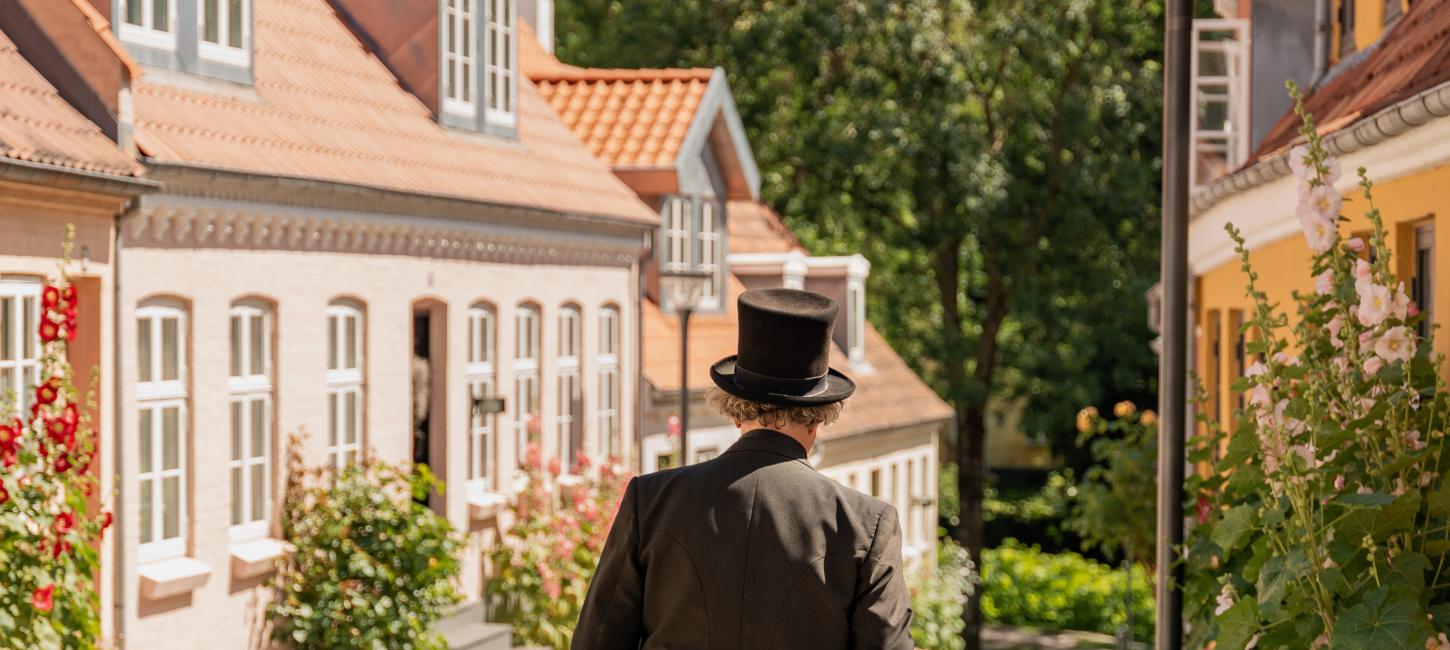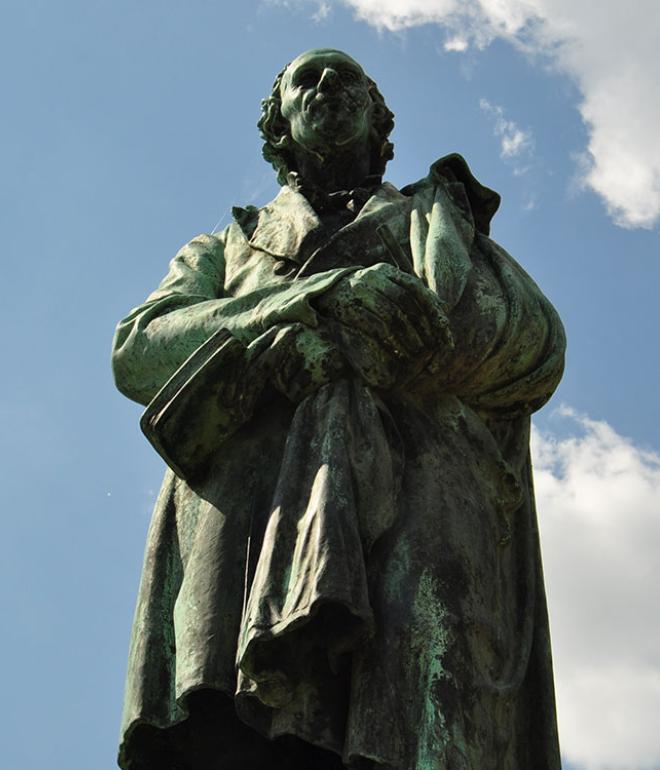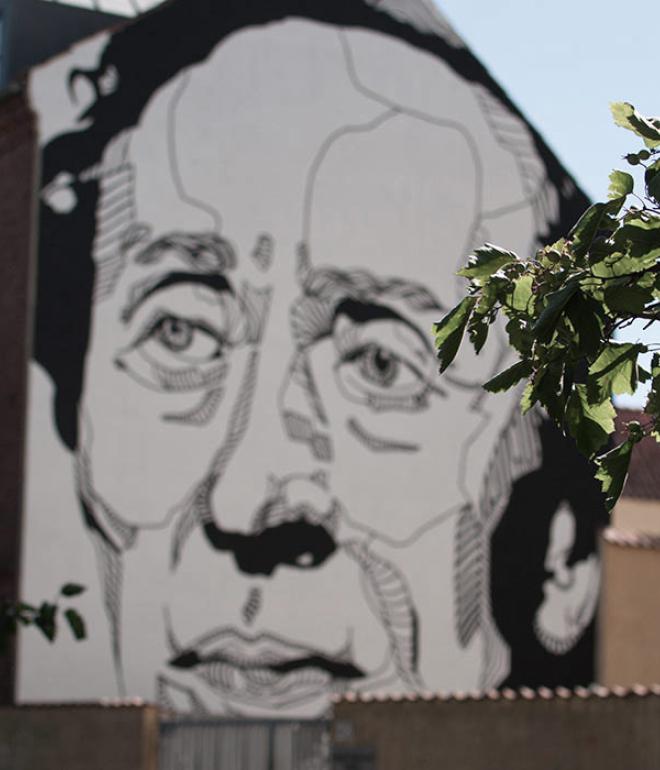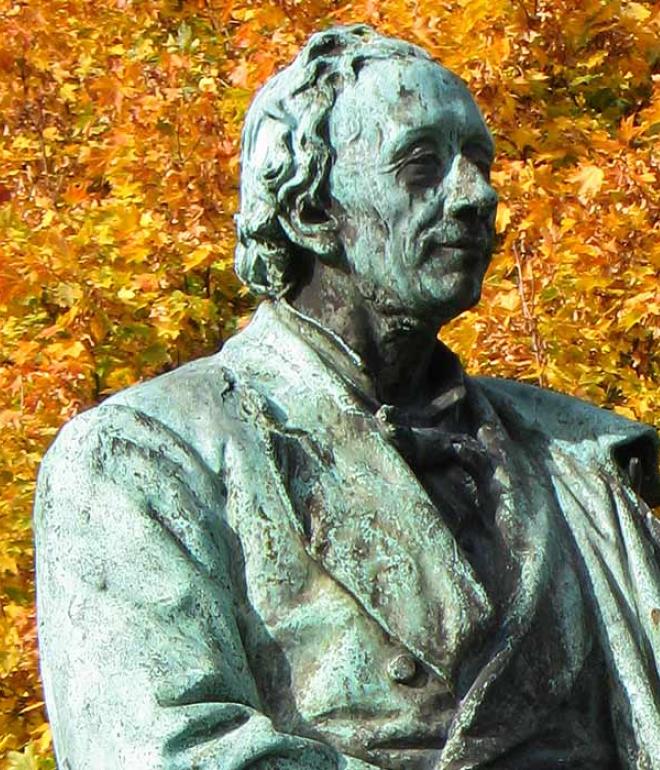
Hans Christian Andersen's personal fairy tale
From a poor child growing up in the slums of Odense, the son of a shoemaker and a washerwoman, to a celebrated cultural figure mingling with the elite of 19th-century Copenhagen—his life story feels like a fairy tale by Hans Christian Andersen himself. But this is not fiction; it is the re
Living is not enough - Sunshine, freedom and a little flower are essential - H.C. Andersen
It all started in Odense
H.C. Andersen was born in Odense on 2 April 1805, the son of Hans Andersen, a cobbler, and Anne Marie Andersdatter, a laundress. Both the birthplace in Hans Jensens Stræde and the childhood home in Munkemøllestræde testify to a hard and poor life, even by the standards of the time. His childhood favourite occupation was to fantasize and imagine fantastic stories, and at the age of 14 he decided to seek his fortune at the Royal Theatre in Copenhagen.
Fairy tales, novels and plays
Hans Christian Andersen's fairy tales are his most well-known works. Stories like The Steadfast Tin Soldier and The Little Match Girl encompass both child-friendly magic and profound existential themes. However, Andersen also wrote novels and plays that reflect his interest in society and the role of the individual. Many of his works were inspired by his own experiences and feelings of alienation.
The first writings
In the same year, he published his first book - Ungdoms-Forsøg - under a pseudonym and submitted a tragedy from the book to the Danish Royal Theatre. The play did not catch on, but the theatre management decided to help the young writer to an education, which he completed in 1829 with an M.Phil. and devoted himself to poetry.
In the early years of his writing (1828-1835), he tried his hand at many genres, displaying a rich imagination, playfulness and daring. His big breakthrough in 1835 was the novel The Improviser and his first fairy tale: Fairy Tales for Children. At the same time, his stories broke through abroad and were successful in both England and Germany.
An extraordinary life
Already during his lifetime, his fairy tales and stories were translated into several languages, ensuring him increasing popular fame. In sharp contrast to his great success as a poet was his private life; he was unsuccessful in love and lived a lonely life plagued by worries, though with a large circle of friends among his peers.
Everything comes to an end
Hans Christian Andersen died in 1875 of liver cancer at the Melchior family's country house 'Rolighed' in what is now Østerbro in Copenhagen, and the funeral attracted international attention.
With his fertile imagination and, for his time, radical and modern approach to art, Hans Christian Andersen is one of the most fascinating figures in Danish cultural history. He contributed not only literary works but also drawings, papercuts and picture books.



